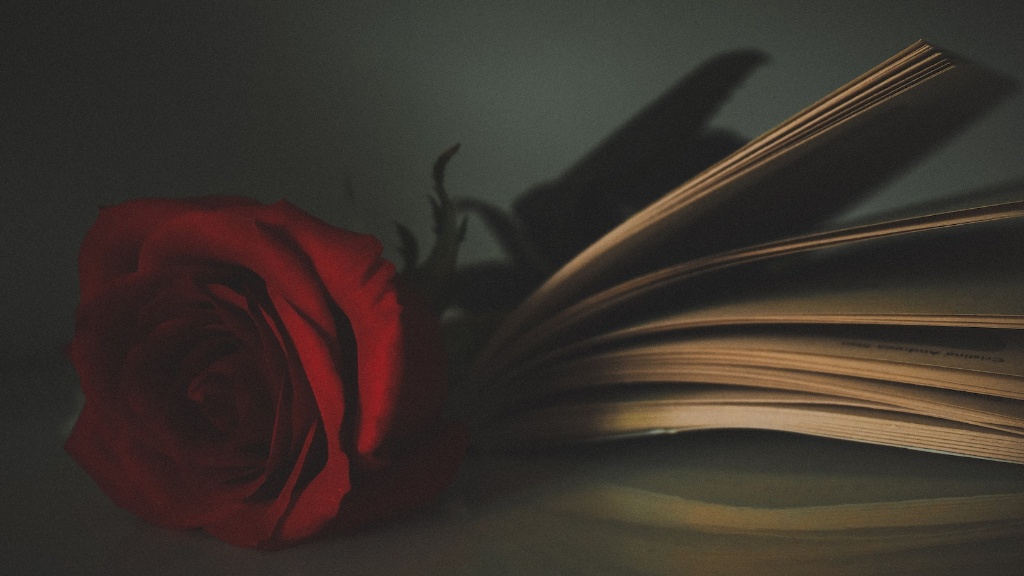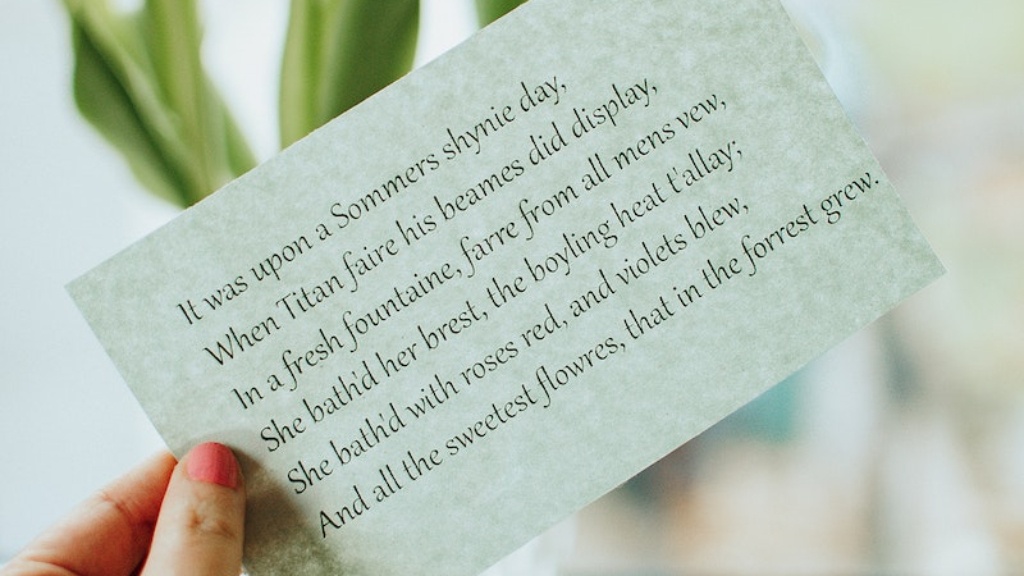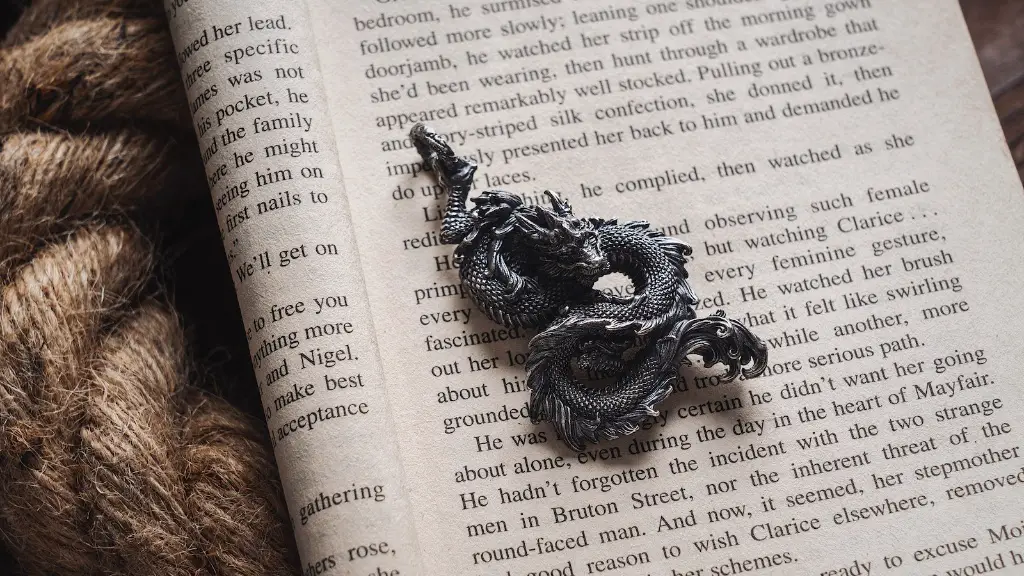What is Visual Poetry?
Visual poetry is an artistic form of poetic expression which involves creating an image that conveys the same meaning as, or a related meaning to, the words of the poem. Visual poetry is also known as poetic art. This art form can be achieved using a variety of media, including drawing, painting, photography, and digital media such as video and animation. Visual poetry, unlike traditional poetry, often relies on the power of visuals and their meaning instead of text.
Techniques to Make Visual Poetry
Allow yourself to be inspired. Visual poetry begins with an idea. Make sure you have access to a variety of materials, such as pencils, paints, or other materials. To come up with an image that conveys the poem’s meaning, use your imagination. It could be simple or elaborate, abstract or realistic. Taking a closer look at your subject matter and identifying an opportunity to represent a concept, emotion, or story visually can help you determine the direction of your visual poem.
Make use of basic design principles. Basic design principles, such as scale, proportion, balance, contrast, and emphasis, make up the foundation of visual poetry. Balance can help you emphasize specific elements in the image. Contrast can be used to create tension between items. Emphasis can help you draw attention to certain parts of the image. Experimenting with scale and proportion will also allow you to create depth in your image.
Experiment with colours. Colours are an important part of visual poetry, as they can be used to create mood and highlight specific elements. By combining different colours, you can create intriguing effects in your poem. Think about how different colour combinations represent different ideas. Consider what you are aiming to convey and how you want your viewer to experience the poem.
Step-by-Step Process of Making Visual Poetry
Choose your theme. The theme and meaning of your poem should be determined before you start to work on it. Choose a theme and stick to it, as it will be easier to come up with a cohesive image that conveys your vision. You can also adjust your theme while you are working on the poem.
Create the image. Choose from a variety of tools and techniques to create the image. Using a pencil and paper is a simple way to create the image. You can also explore digital tools to create a digital poem. You can also combine traditional and digital techniques to create a more dynamic poem.
Compose the lyrics. Once you have created your image, it is time to compose the lyrics for your poem. This can be done by writing the poem first and then manipulating the words to match the image, or vice versa. You should be aware of the connotations of the words and use them to effectively communicate the meaning of the poem.
Find the perfect rhythm. To make a truly engaging visual poem, it is important to find the perfect rhythm. Use various elements, such as the visual imagery, text and music, to enhance the rhythm of your poem. This will help create a powerful and moving visual poem, as it will draw the viewers in.
Tips on Writing Visual Poetry
Let your ideas flow. One of the best tips for writing visual poetry is to let your ideas flow freely. Often, ideas that you would never consider can be great starting points for a poem. By letting your ideas flow, you could create a more unique and exciting poem than if you were to try and plan out the poem beforehand.
Make use of metaphors. Metaphors can be great tools for creating a meaningful and thought-provoking poem. Through using metaphors, you can create an intriguing image that expresses the poem’s meaning in a unique way.
Experiment with words. Playing around with words can also be an effective way to create interesting visual poetry. Try experimenting with different words to see what kind of imagery and meaning is created. By doing this, you can create a unique and powerful poem.
Ideas to Make Visual Poetry
Make use of symbols. Symbols can be used to create powerful images in visual poems. Symbols allow you to express complex ideas in a single image. Using symbols in your poem could make it more engaging and exciting.
Incorporate elements from other art forms. Elements from other art forms, such as music, dance, and theatre, can be used to create a unique and interesting visual poem. Incorporating elements from other art forms could open up new possibilities for your visual poetry.
Make use of illustrations. Illustrations are a great way to make a visual poem more engaging. Illustrations can be used to make the poem more visual. They can also be used to create a connection between the poem and its visuals.
Tools to Make Visual Poetry
Traditional mediums. Traditional mediums, such as pencils, paints, and markers, can be used to create visual poetry. Using traditional materials could allow you to create an image with a more personal feel.
Digital media. Digital media, such as photography, video and animation, can be used to create engaging visual poetry. Digital media allows you to explore more possibilities in your poem. It also allows you to create intricate visuals with ease.
Digital tools. There are a variety of digital tools that can be used to create visual poetry. These tools are easy to use and allow you to create dynamic visuals with minimal effort. Tools such as Adobe Photoshop, After Effects and Premiere Pro can be used to create visually stunning visual poems.
Examples of Visual Poetry
Visual poetry is a versatile art form. It can be used to create both abstract and realistic art. Here are some examples of visual poetry:
Karen George’s “Trees”. In this visual poem, Karen George uses visual symbols to represent the different seasons of trees. Her use of colour and scale creates a powerful image that conveys the poem’s meaning in an engaging way.
John Byrne’s “The City”. In this visual poem, John Byrne uses photography to convey the hustle and bustle of a city. His use of light and shadows creates an interesting contrast that conveys the poem’s emotion.
Emily Moore’s “Life’s Choices”. In this visual poem, Emily Moore uses illustration to create a powerful image. Her use of shapes, colours and patterns creates a meaningful image that conveys the poem’s meaning.
Benefits of Making Visual Poetry
Making visual poetry can be a rewarding experience. It allows you to express your ideas and thoughts in a creative and unique way. It also allows you to explore different art mediums and techniques. Additionally, visual poetry allows you to communicate complex ideas in a single image. It also encourages self-expression, creativity, and problem-solving skills.
Visual poetry also has the potential to make a powerful impact on viewers. It can be used to make an emotional connection with the viewers and create engaging artworks. Visual poetry can also be used to convey powerful messages in a visual way.
Making visual poetry is a great way to practice and refine your artistic skills. It allows you to hone your craft and come up with fresh, innovative ideas. Visual poetry also allows you to explore different concepts and ideas in a visual way.
Evaluating Visual Poetry
When evaluating a visual poem, it is important to consider how effective the poem is in conveying its message. Evaluating a visual poem involves looking at the elements used to create the poem and assessing how successful they are in conveying the poem’s meaning.
The visual elements of a visual poem are important, as they are the main elements used to convey the poem’s message. Evaluating these elements involves assessing how successful they are in creating the desired effect. It is also important to consider how well the poem’s visual elements work together to create a cohesive and meaningful image.
The words of the poem are also important, as they are used to express the poem’s ideas and concepts. Evaluating the use of words in a visual poem involves looking at how successful the words are in conveying the poem’s meaning. It is also important to consider how well the words work together with the visual elements to create a powerful image.
Finally, it is important to assess how successful the poem is in creating an emotional connection with the viewers. Evaluating the emotional impact of a visual poem involves looking closely at its elements and determining whether or not they are successful in creating the desired effect.
By considering these factors when evaluating a visual poem, you can determine how successful the poem is in conveying its message. Evaluating visual poetry can also help you identify areas for improvement and come up with more effective ways to create visual poetry.


